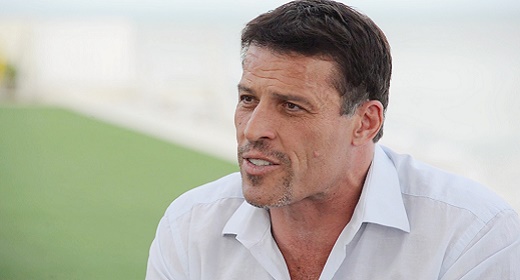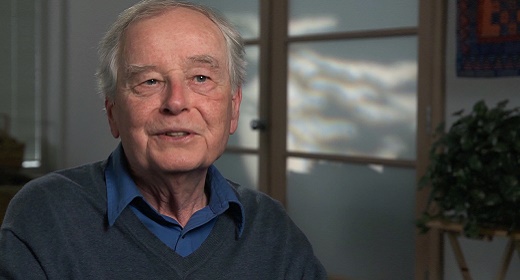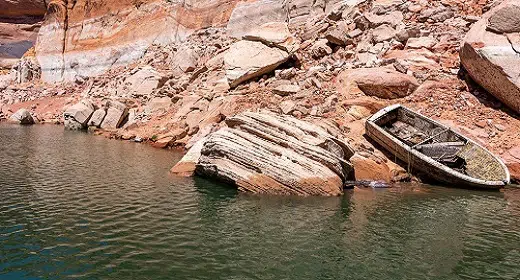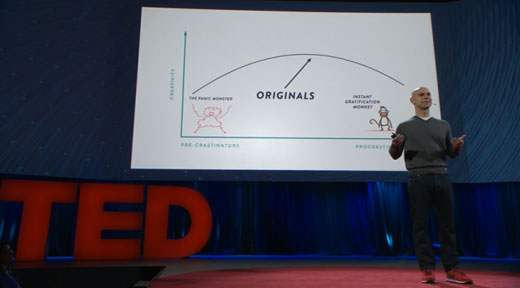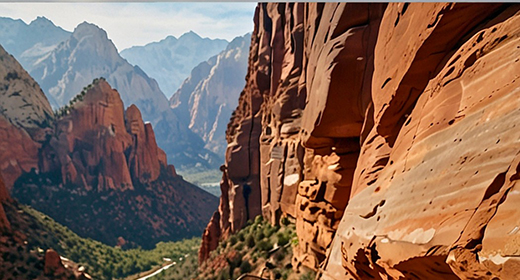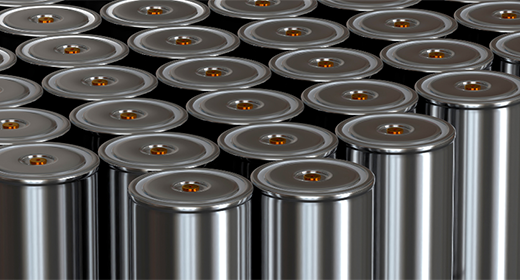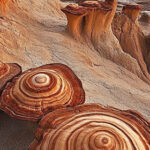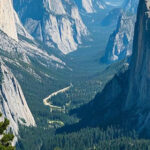by Pete McBride: Water woes threaten America’s second largest reservoir—but leave new vistas in their wake…
At dusk, the bats appear in the ghost forest that surrounds us—blackened tree trunks encrusted with a white coating. These cottonwood and willow groves are long dead but, amazingly, still upright after more than half a century underwater.
/https://tf-cmsv2-smithsonianmag-media.s3.amazonaws.com/filer_public/42/35/4235005d-25c4-475d-9dee-8d9978fee386/oct2022_g05_glencanyon.jpg)
I am camped on the fickle shoreline of Lake Powell, the second largest reservoir in the United States, after Lake Mead. Once a vacation destination visited by two million people annually—as a kid I learned to water-ski there during family visits in the 1980s—Lake Powell is today just a hint of its former self, littered with stranded boat ramps and even entire abandoned marinas. Instead of a recreation idyll, it’s a symbol of water troubles in the West and the impact of climate change.
/https://tf-cmsv2-smithsonianmag-media.s3.amazonaws.com/filer_public/dd/25/dd258213-a7eb-4b3e-9480-76e1ad38996a/oct2022_g99_glencanyon.jpg)
/https://tf-cmsv2-smithsonianmag-media.s3.amazonaws.com/filer_public/d3/b3/d3b3a7ca-4cf5-444d-9e19-e864e5f4efb2/oct2022_g03_glencanyon.jpg)
Lake Powell has been shrinking for a number of reasons. The Colorado River system, which feeds both Lake Powell and Lake Mead, supplies drinking water to more than 40 million Americans and, in winter, much of the country’s salad bowl. Seven states draw water from the river system according to allocations set in 1922, and it has since become clear that early 20th-century officials overestimated the amount of water available to allocate. As a result too much water has been consumed for too long. In addition, for two decades a mega-drought has depleted the Colorado River and its reservoirs, and less annual snowpack in the Rocky Mountains to the east has made things worse. Around the time I visited Lake Powell this past April, it had fallen to 24 percent of capacity and was decreasing a half inch a day.
/https://tf-cmsv2-smithsonianmag-media.s3.amazonaws.com/filer_public/5f/6b/5f6bfef8-8d10-4f90-b327-ba1c15c7e55f/oct2022_g16_glencanyon.jpg)
The water stored in Lake Powell is also a source of power, with turbines in the river downstream of the massive Glen Canyon Dam generating electricity that helps power some 3.2 million homes. Water experts and the Bureau of Reclamation have predicted the lake may drop so low by 2023 that there will not be enough water to spin the turbines. Water managers have been trying to avert such a scenario, known as minimum power pool, by releasing water from reservoirs upstream and withholding water from users downstream. The complexities of this Western water puzzle are profound, involving potential threats to energy, drinking water and agriculture.
/https://tf-cmsv2-smithsonianmag-media.s3.amazonaws.com/filer_public/8d/6d/8d6d1a63-8afc-4f0f-b644-395d75d646c6/oct2022_g08_glencanyon.jpg)
/https://tf-cmsv2-smithsonianmag-media.s3.amazonaws.com/filer_public/0a/9f/0a9f0b3a-fc1f-4fef-a974-7f42c5fea22d/oct2022_g12_glencanyon.jpg)
/https://tf-cmsv2-smithsonianmag-media.s3.amazonaws.com/filer_public/8d/c2/8dc2a859-cce2-4d99-92c6-8fa0039028f4/oct2022_g11_glencanyon.jpg)
/https://tf-cmsv2-smithsonianmag-media.s3.amazonaws.com/filer_public/e0/7e/e07e876d-626c-4e21-b2e7-c53146e5a59d/oct2022_g04_glencanyon.jpg)
At the same time, something else is going on. The strikingly beautiful canyon that long existed before engineers dammed the river to create Lake Powell is coming back, little by little. John Wesley Powell, who named it Glen Canyon during his survey of 1869, said it was a “land of beauty and glory.” I was eager to document that land as it revealed itself.
/https://tf-cmsv2-smithsonianmag-media.s3.amazonaws.com/filer_public/ba/05/ba0561e6-c099-4a99-99e3-dc5a9d302bae/oct2022_g01_glencanyon.jpg)
/https://tf-cmsv2-smithsonianmag-media.s3.amazonaws.com/filer_public/20/b8/20b8879e-3bed-41de-bc8f-215cd2206d35/oct2022_g09_glencanyon.jpg)
Over four days, I hiked and explored some 50 miles of tributaries, much of it in the Escalante drainage. My companions were Eric Balken, director of the Glen Canyon Institute, a nonprofit devoted to restoring the canyon to its natural state, and a friend of mine named Len Necefer, a member of the Navajo Nation and founder and CEO of NativesOutdoors, a Native-owned athletic and media company. Everywhere we roamed, we witnessed a wilderness re-wilding. Birds and bats darted around, and beavers and bobcats left their marks widely. A freshwater desert orchid, a rare flower I’d never heard of, bloomed along seeps that had been flooded my entire life and appeared only recently. “Look at those,” Balken said with excitement in his eyes. “I didn’t expect to see orchids returning so quickly. It almost feels wild again.”
/https://tf-cmsv2-smithsonianmag-media.s3.amazonaws.com/filer_public/80/09/80095475-d0cb-4fb5-9b6c-dfdc928e5903/oct2022_g15_glencanyon.jpg)
In one drainage, we walked into an alcove known as the Cathedral in the Desert, which boasted a waterfall trickling down through a gap in an overhang hundreds of feet above us. I sat in awe, thinking about how such natural wonders had been underwater my entire life.
/https://tf-cmsv2-smithsonianmag-media.s3.amazonaws.com/filer_public/fe/eb/feeb261e-a7da-4217-b028-1c78ee237465/v2oct2022_g10_glencanyon.jpg)
In our camp, the detritus of other times surrounded us: pull-tab beer cans, flippers, lawn chairs, golf balls, anchors, a pair of pliers, sunglasses, jet skis and even sunken boats. A time capsule of the lake’s history.
/https://tf-cmsv2-smithsonianmag-media.s3.amazonaws.com/filer_public/dd/56/dd56311e-f861-4b3a-8dfb-a22f9de3fcf8/oct2022_g07_glencanyon.jpg)
But up the side canyons, where monsoon rains have worked away at the layers of silt and debris, slowly starting to wipe away the white “bathtub ring” that reminds us where the lake once stood, nature is returning—and with it, many remarkable alcoves, arches and overhangs that equal or surpass those in the Grand Canyon. Some still contain the archaeology of ancient Puebloan rock structures or steps cut into the sandstone that once served as ladders.
/https://tf-cmsv2-smithsonianmag-media.s3.amazonaws.com/filer_public/05/3e/053eab89-1e6a-46a2-bb14-a2144cac8cbd/oct2022_g14_glencanyon.jpg)
Edward Abbey, the writer and environmental pioneer, visited the canyon before it was flooded and described it as a “portion of earth’s original paradise.”
/https://tf-cmsv2-smithsonianmag-media.s3.amazonaws.com/filer_public/6c/5e/6c5e8db7-de61-47f5-86a3-4be512f0ddbe/oct2022_g06_glencanyon.jpg)
The diminishment of Lake Powell is a tragedy for countless Americans who, like me, created wonderful family memories there. And the loss of water is a matter of grave concern to people and businesses downstream who depend on the water stored there. Yet we can also marvel at the beauty of the landscape as it reasserts itself. There are lessons to be learned, for sure, lessons about our relationship to nature, lessons about time. My friend Necefer, sitting on a shore that was underwater not long ago, looking up at the towering orange canyon walls, mentioned one of them. “Nature bats last,” he said.




